The new Model S/X interior design
When I saw the update of Model S/X this morning, I had an idea: “With such a small update on the exterior, paired with the drastic update on the three-electric interior, traditional car manufacturers would definitely be criticized if doing the same thing. Moreover, if released for only half a year, it would almost certainly become a negative example.” However, what I did not expect was that the “drastic” updated interior design is actually getting more attention than the more significant new Plaid powertrain.
Starting from the large touch screen in 2012 (even the rudimentary three-screen interaction on Roadster 1 before that), Tesla has been challenging traditional automotive industry cognitions in interior design and interactive logic. Eight years later, looking at the new cars on the market, the friends who used to criticize the large touch screen interaction have also embraced this trend.
However, at that time, Tesla still followed the traditional approach of the whole vehicle factory in some parts, and even directly used the shift lever and other control components from Mercedes-Benz.
According to a comparison between Model X lever and C-Class lever uploaded by a Reddit user:
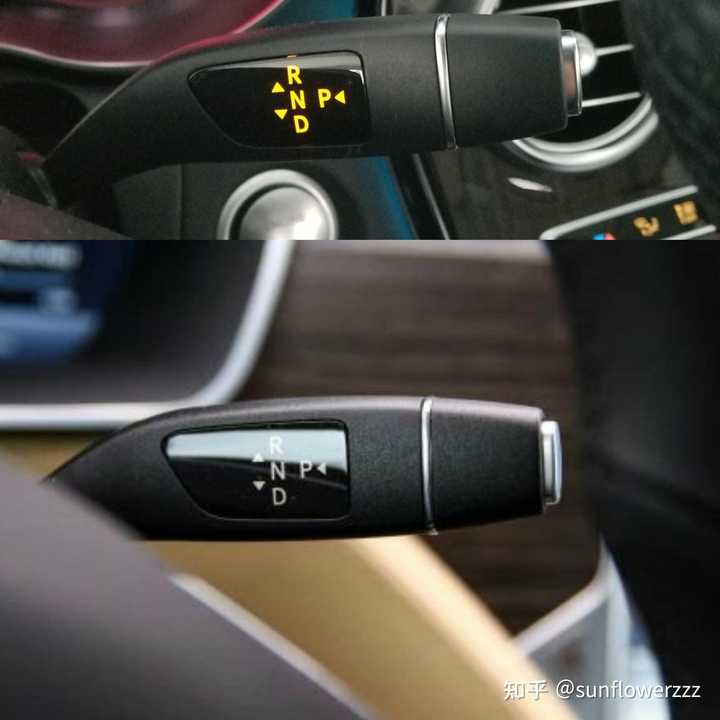
Tesla, which has already opened up new battlefields in product definition and consumer perception, will of course challenge these traditional logics again during the development of new models. That is why we have what we saw this morning.
A very brief image of the new S/X steering wheel:
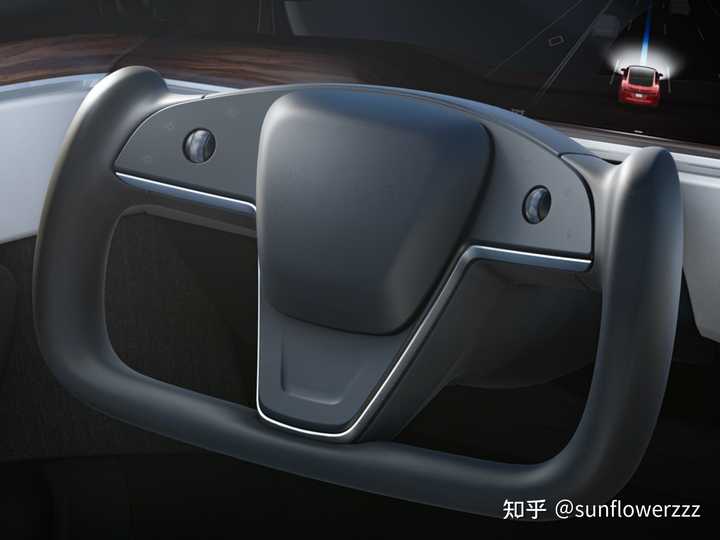
The lever behind the steering wheel disappears:
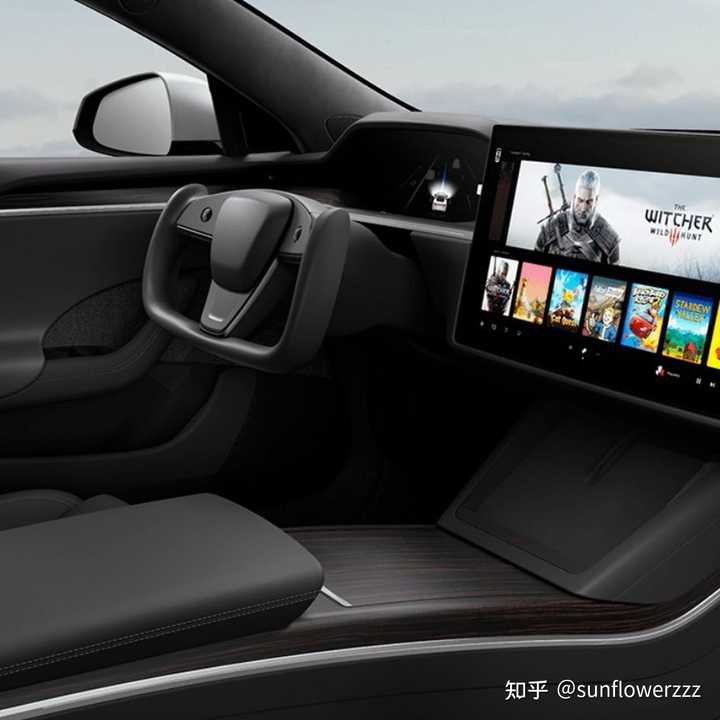
The steering wheel becomes square, and controls such as wipers and headlights are integrated into the touch buttons on the steering wheel. However, how does the shift operation work?
Doubts about whether this is reasonable are normal, let us take a look at the real experience of a similar design of the Roadster 2 that Tesla has demonstrated before.
Real experience video of Roadster 2 interior design with a similar steering wheel.
In the video, we can focus on two key points:
- What is the turning ratio of the square steering wheel? Is it similar to that of race cars or conventional passenger cars?
- How is shifting operated after the shift lever is removed?
The source of the first video is the YouTube user REC Anything. It features footage of the actual Roadster 2 interior, showing that the steering wheel is square and the shift lever has been replaced. But how is shifting achieved now?
At around 12-13 seconds, we can see the driver making some adjustments on the touchscreen before leaving, so shifting may be controlled by this screen. Also, we can observe in the video from 13-23 seconds that the driver can perform a complete turn in at least one direction. This turning radius is not much different from that of some sports-type passenger vehicles, which have a turning radius of two complete turns from end to end.

However, the surface area of the steering wheel in the Roadster 2 demonstration car is extremely small, so it may not be able to integrate a safety airbag. This is unlikely to be the final production version. Therefore, we will only discuss the turning ratio and logic of the steering wheel in this video.Translate the Chinese text in the Markdown below into English Markdown text, in a professional manner, while keeping the HTML tags inside the Markdown, and output only the result.
In addition, it cannot be ruled out that the Model S/X will have a more extreme steering system design, with a faster steering ratio on the basis of online steering control, but if it is the same design as the Roadster 2 showcase car, there should not be too much difference in the steering wheel angle compared to ordinary civilian models.
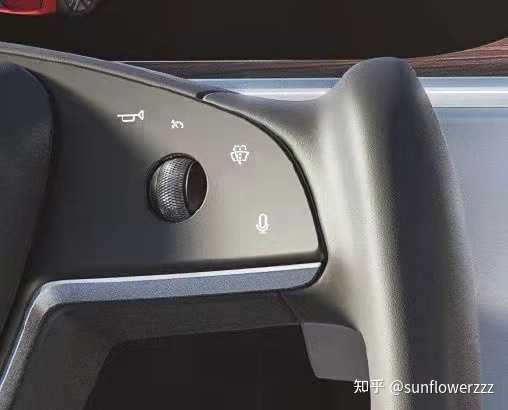
In fact, the design of the steering wheel of the Model S/X is much more traditional than that of the Roadster 2. Apart from the integration of the airbag in the space, there is a blank area below the safety airbag DAB, with key interactive controls for volume, wipers, and lights on the left and right sides. So what is the area below used for?
Introducing the Tesla patent for steering wheel gear shifting interaction that was exposed last year.
Tesla’s 2020 patent for steering wheel gear shifting interaction
In February 2020, Tesla had a design interaction patent for interior decoration that include the design of the integrated shift lever on the steering wheel.

Regarding the interaction logic, there will also be tactile, visual, and auditory feedback.
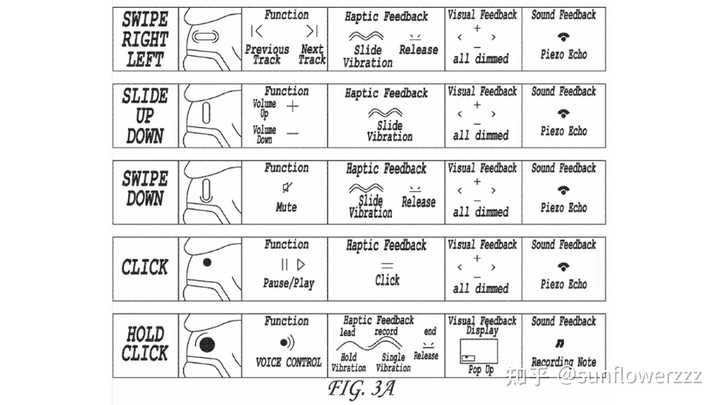
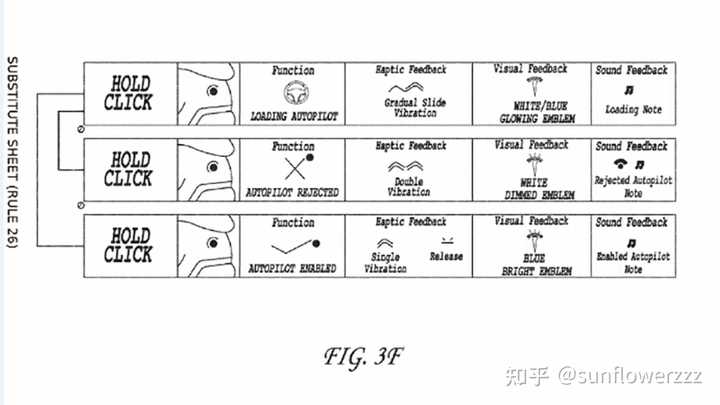
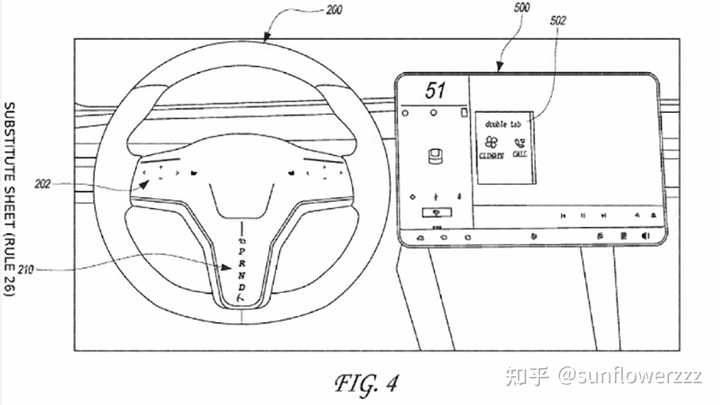
Now let’s compare the Model S/X’s new steering wheel design, can we understand where the gear shift design in the patent is?
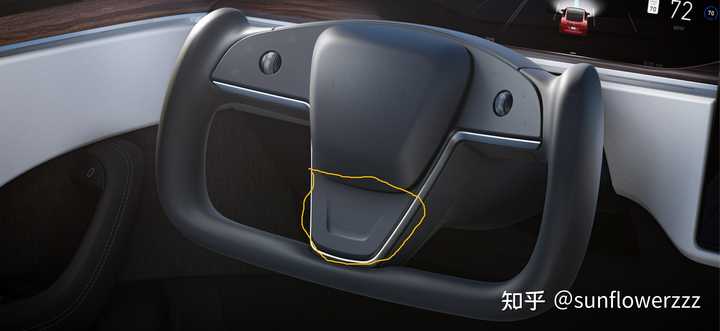 I estimate that there may be some doubts about the reliability of touch controls. Let me give an example of two traditionally renowned cars in the automotive industry: the Ferrari SF90 and Roma.
I estimate that there may be some doubts about the reliability of touch controls. Let me give an example of two traditionally renowned cars in the automotive industry: the Ferrari SF90 and Roma.
The SF90 and Roma both use the latest interactive solutions and software and hardware designs purchased by Ferrari from ART System. Not only the steering wheel, rearview mirror control, and lighting control areas are touch buttons that light up only after the car is started. You can see the effect below before starting:

And below is the effect after starting:
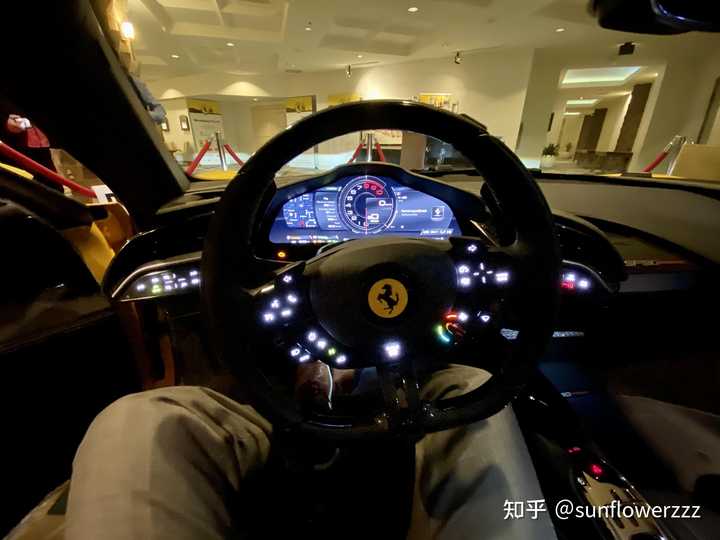
These shiny little buttons have no feedback when pressed, including the engine start button under the trademark of the steering wheel.
The shining examples of the traditional automotive industry can use touch interaction extensively, and Tesla provides haptic feedback. Is there still a problem?
Conclusion
Tesla, which constantly challenges user habits, has once again come up with a design that is incomprehensible, but it is not of much significance to directly question its rationality. Against the backdrop of leading the industry in areas such as the three-electric system, it can always find buyers for even the most absurd designs. After all, Tesla’s “SEXY” core is its energy system and the usage experience that challenges the traditional energy-power system and completely rebuilds the user’s cognitive system.
To challenge or defeat Tesla, one needs to start from its core charm and defeat Tesla in its way, without being distracted by these peculiar interaction designs.
This article is a translation by ChatGPT of a Chinese report from 42HOW. If you have any questions about it, please email bd@42how.com.
